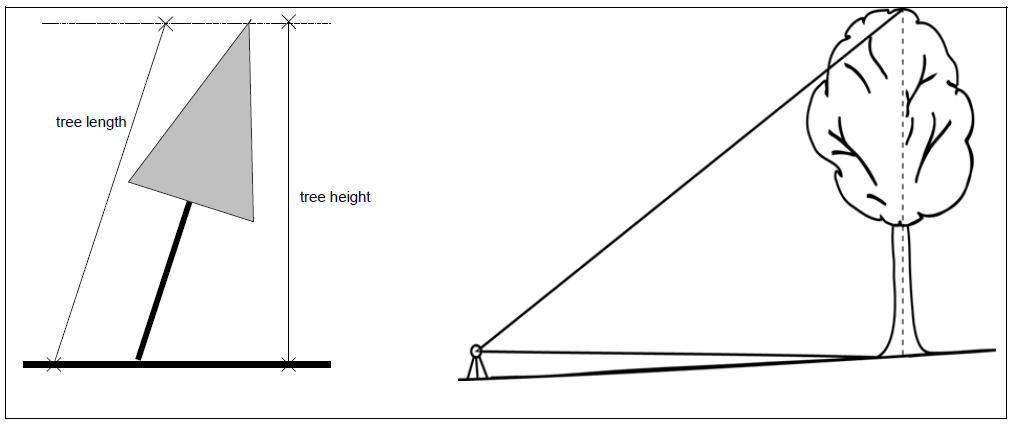309 Tree/shoot height
Definition
Tree/shoot height is defined as the vertical distance between the highest point of the crown and the ground surface.
It differs from tree/shoot length, which is defined as the bole length from ground level to the tip of the tree (see Fig. below).
Methods
Where possible, measurement is to be made to the nearest 0.1 m; it is recognised that this level of accuracy may not be achieved always.
It is advised to record the position (e.g. distance from the tree and azimuth) from which the measurement is carried out in order to allow future measurements from the same standing position. Alternatively, measurement positions can be marked permanently on the ground. Although it is recognised that conditions of visibility may change after 10 or 20 years (growth of the understorey, crown development, …), this is one way of limiting measurement errors.
In some cases (e.g. dieback, shoot death), the top of the tree is defined as the highest “living” bud of the crown. Although it is not easy to see the top when measuring deciduous trees during winter, this may avoid measuring dried dead branches at the top of the tree and which have a tendency to break off prior to the onset of spring.
For leaning trees, it is advised to take height measurements perpendicular to the direction of leaning (see Fig. below).
When a tree stands on a slope, it is advised to take height measurements from the same contour line as the tree base or from above.
Starting the measurement from the mark at dbh and adding 1,3 m to the result eliminates errors originating from different perceptions of ground.

To be observed when measuring tree height on broadleaved and leaning trees.